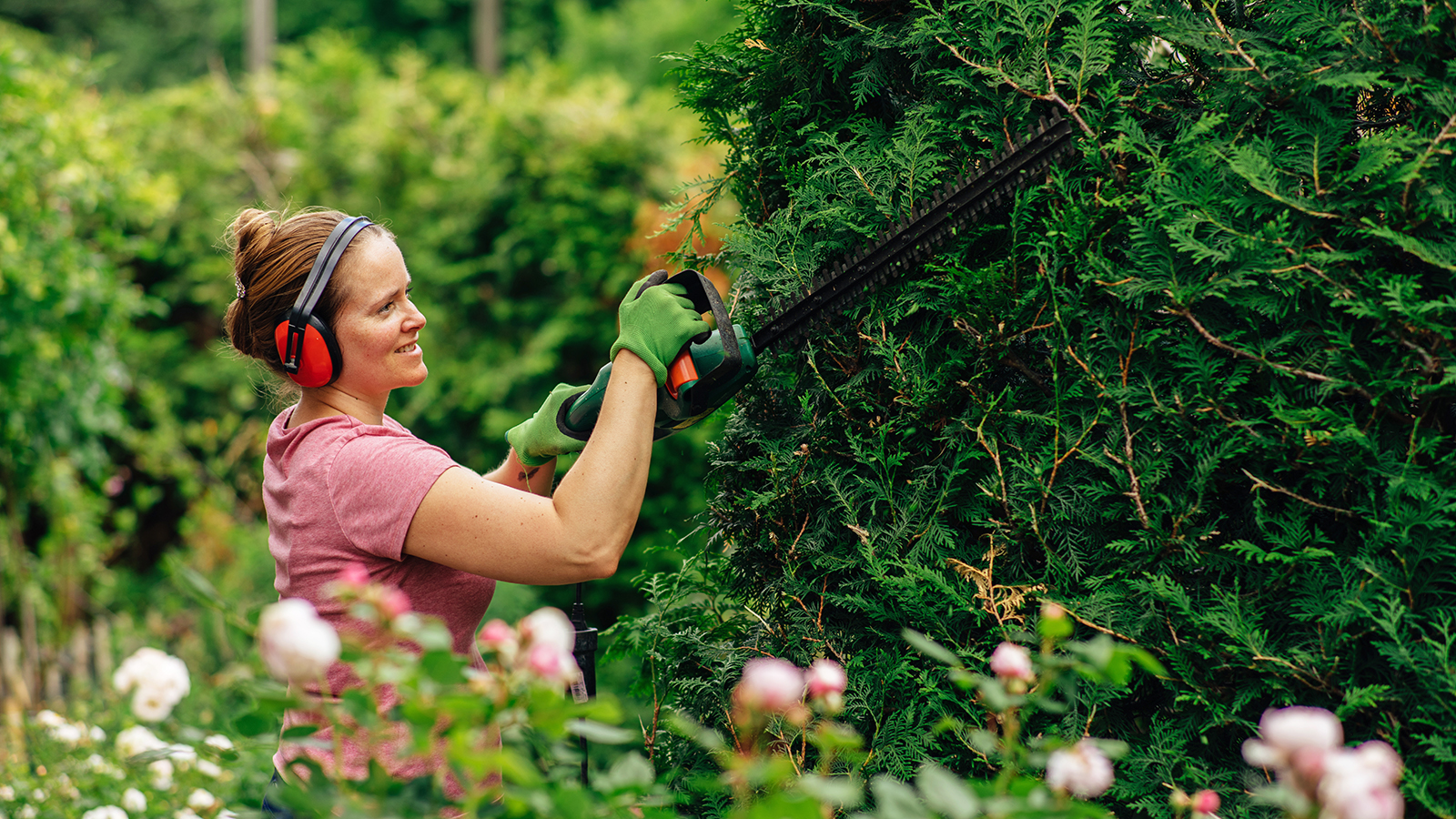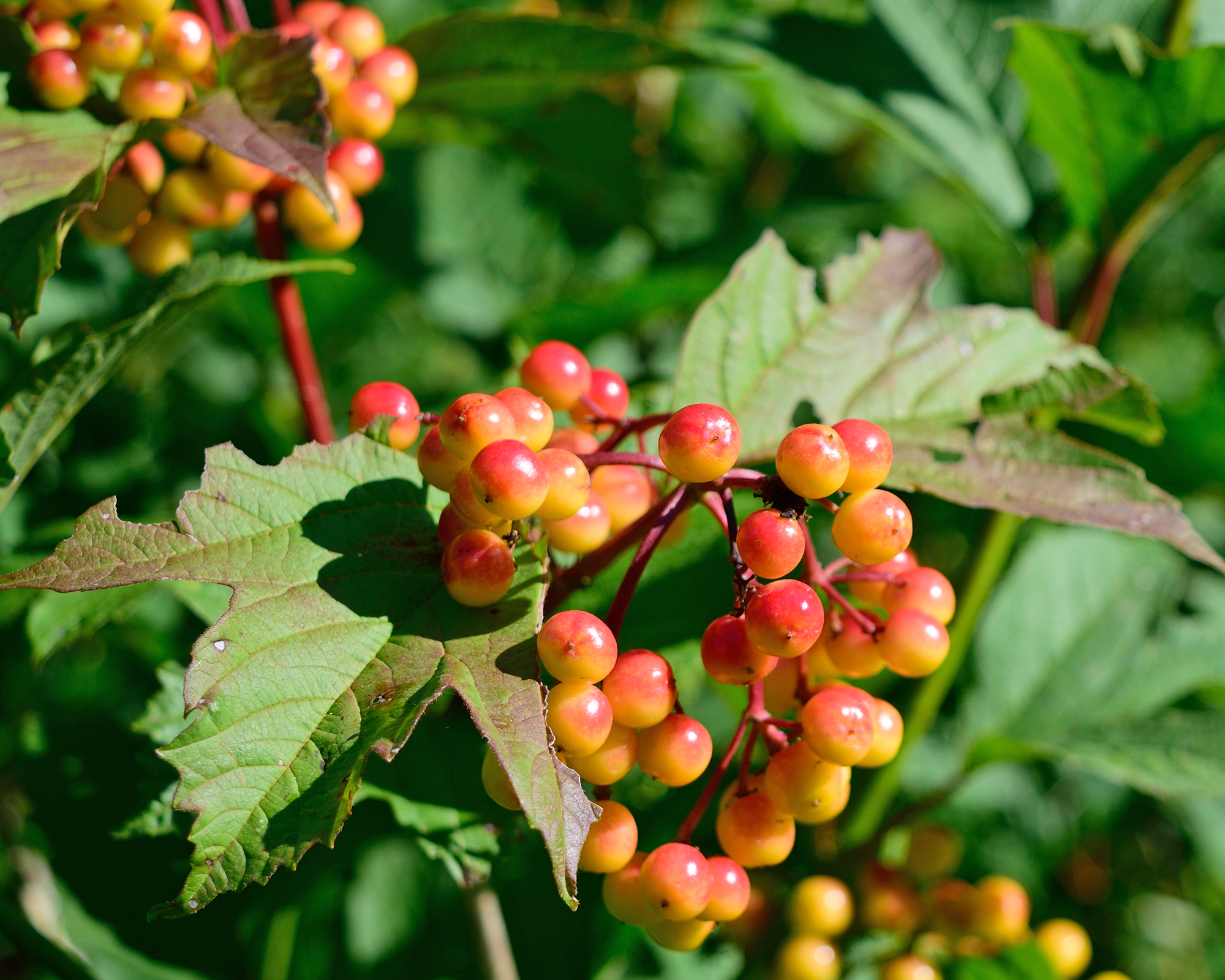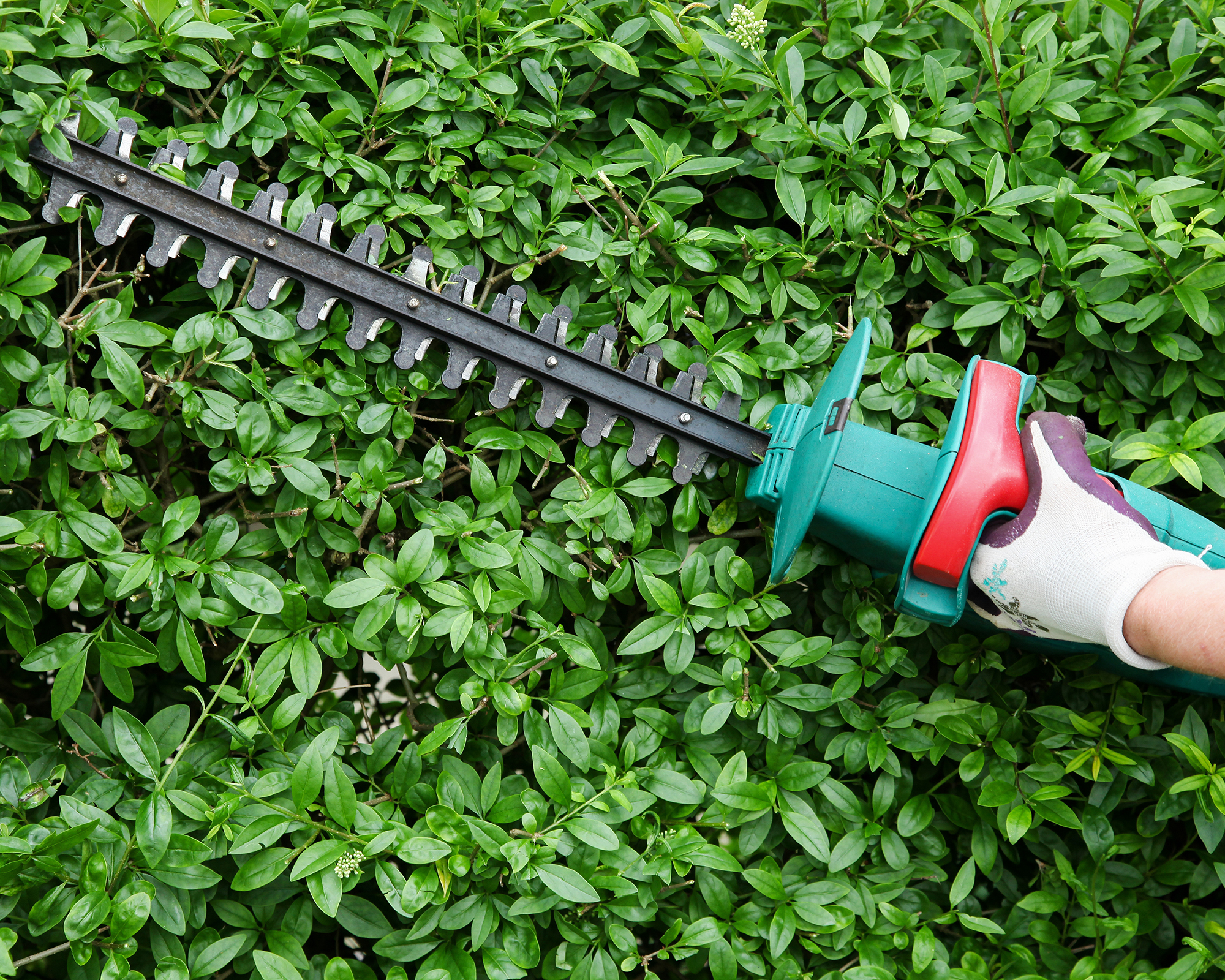I Took Control of My Neighbor's Overgrown Hedge – and Learned the Trimming Etiquette Everyone Should Know
When her neighbor began to neglect their boundary hedge, gardening writer Mary Ellen Ellis took matters into her own hands and learned a lot along the way.


They say good fences make good neighbors, but a hedge between houses can do the same job. Yet, living boundaries can be a divisive issue. What happens when the hedge becomes a problem, but it belongs to the neighbor? How do you deal with plants you have to live with but that don’t belong to you? We faced just that issue with the hedge in our back garden.
We have lived in the same house for years, and unusually, the house behind ours has been unoccupied the whole time. It’s a unique situation, but we don’t really mind. It’s been great for privacy. The owner routinely visits to maintain the home, but has never rented it or, as far as we know, lived there. He has also mostly been very good about maintaining the yard and garden, carrying out occasional hedge trimming and pruning. One year, he grew vegetables and left tomatoes and zucchinis on our back porch. Mostly, we’ve had a hands-off but polite neighborly relationship.
Part of the neighbor’s yard that we have always liked the best is the hedge that runs along the boundary between our two properties. It’s an approximately six-foot-tall hedge of American cranberrybush (Viburnum opulus var. americanum).
When the Hedge Needed Attention
Hedges between neighbors, when healthy, act a lot like a fence. It’s not that we didn’t want to interact with the neighbor, but privacy is nice. But as he aged, he started spending less time on yard maintenance. Someone else came to mow the lawn, and we saw the actual neighbor less and less.
The cranberrybush started to suffer a little from the neglect. He previously kept it well trimmed, and it always looked happy and healthy. The American cranberrybush is a native viburnum. It is deciduous and has white spring flowers followed by red fall berries that give it its common name.
This pretty hedge thrived for many years as our privacy screen, but it became overgrown. Later, it started dropping leaves early, and each year the spring growth became more and more paltry. What could we do?

What Is the Hedge Cutting Etiquette?
The poor growth came later. The first issue we faced was that the cranberrybush became overgrown as the neighbor spent less time on garden maintenance. He wasn’t around often, either, so we faced a question: Should we just trim it ourselves? What’s the etiquette here?
Sign up for the Gardening Know How newsletter today and receive a free copy of our e-book "How to Grow Delicious Tomatoes".
My husband wanted to simply trim it without asking permission first, which seemed like a bad idea to me. He argued that we were doing him a favor. I convinced him to hold off until we could talk to the neighbor.
Having a neighbor who doesn’t actually live in the house makes issues like this harder to manage, but I was glad we went the extra mile to communicate. Once we talked to him and offered to do it ourselves, he was pleased. As he was getting older, he said he found it more difficult to manage the garden. He gave us permission to manage the hedge and even thanked us.
Bringing the Hedge Back to Life
Keeping the cranberrybush hedge trimmed was just the first step. We trimmed it back after flowering in spring. Although dormant pruning is usually best, it really needed a trim. This worked out well, and we managed to get the hedge back down to a reasonable size and looking tidy.
When a hedge is overgrown, you really need a good cordless hedge trimmer to get the job done, like the ever-popular Greenworks 40V Cordless Hedge Trimmer, available on Amazon. For taller hedges, the brand's Cordless Pole Hedge Trimmer is a better choice. Before trimming a hedge, thoroughly check for nesting birds and try to avoid the key nesting season if possible.
After cutting the hedge, we found that new growth on the hedge was getting sparse. There didn’t seem to be any pests or signs of disease, so we decided to apply some fertilizer. We didn’t ask permission this time, assuming our neighbor was happy for us to do as we saw fit. For hedges, it's best to use a high-nitrogen fertilizer to support leaf growth, such as BioAdvanced 12 Month Tree and Shrub Protect and Feed, available from Amazon.
In that first year after fertilizing, the hedge still looked a little sorry for itself. By the next year, though, it was thriving again and rewarded us with plenty of leaves and flowers.

What I Have Learned – and How it Can Help You!
Hedge problems between houses can become hedge problems between neighbors, but they don’t have to. Approach the problem with a positive attitude rather than with a complaint, or worse, a threat. In our unique case, our non-resident neighbor actually needed help. My best advice in this situation is to simply talk to your neighbors. People are usually more reasonable and helpful than you might think.
What Are the Rules for Trimming a Neighbor's Hedge?
If your neighbor's hedge extends over the boundary, you're usually OK to trim the parts that encroach on your land, though you cannot go beyond the boundary without permission. However, if you harm the hedge, you could be held responsible, so be sure to identify the hedge type and follow specific pruning and care advice for that variety.
In some private neighborhoods or homeowner associations, there may be rules governing hedge height, trimming responsibilities, and even how boundaries are shared. You should also check local municipal codes or ordinances for guidance before proceeding.

Mary Ellen Ellis has been gardening for over 20 years. With degrees in Chemistry and Biology, Mary Ellen's specialties are flowers, native plants, and herbs.